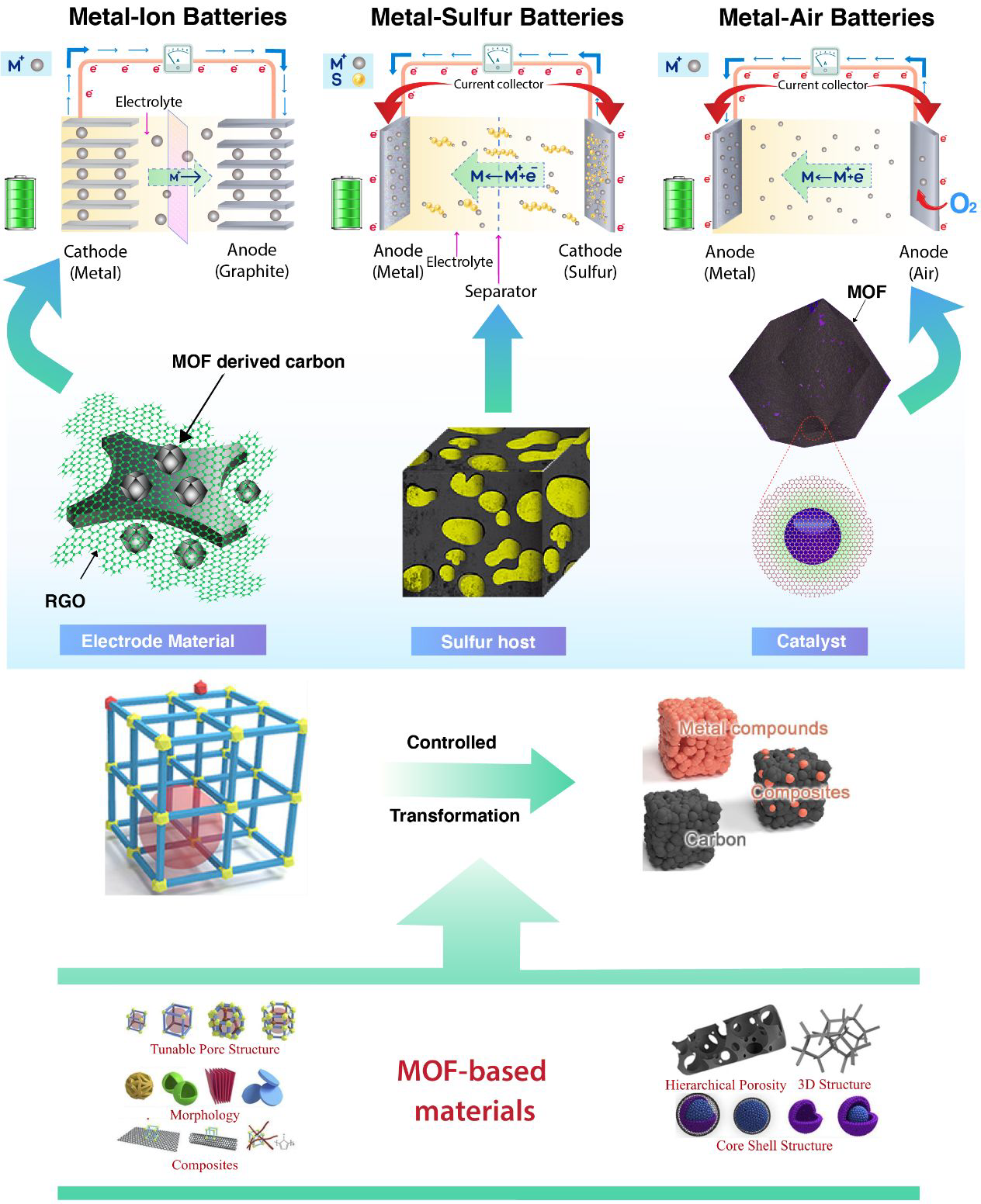
Lithium batteries are reaching technological maturity and metal-organic framework-based materials may be a long-term answer.
Lithium-ion batteries (Li-ion) are everywhere. For the decades since their inception, they have been powering billions of devices including mobile phones, cameras, laptops, e-scooters and electric vehicles. This is due to their higher energy density and lithium being the lightest of all metals with great electrochemical potential. However, as demand for batteries grows, supply of lithium is struggling to keep up. Finding alternatives is becoming increasingly important.
Dr. Shashikant Patole, Assistant Professor of Physics at Khalifa University, has published a review paper investigating the potential of metal-organic framework (MOF)-based materials in batteries. With Dr. Anukul Thakur, Korea Institute of Materials Science, Dr. Mandira Majumder, College de France, Dr. Karim Zaghib, McGill University, and Dr. M. V. Reddy, National University of Singapore, the review paper was published in Materials Advances.
“The compact structure of Li-ion batteries has contributed hugely towards revolutionizing electronic gadgets by adding features such as compactness, efficiency, flexibility, and mobility,” explained Dr. Patole. “Nevertheless, after four decades of intense research and advancement, Li-ion battery technology is reaching its stalling point, but the demand for higher energy density prevails.”
Some researchers are investigating ways to optimize current Li-ion systems by changing the cathode, anode and electrolyte materials, but the continued use of lithium in these types of batteries is becoming a major cause of concern due to the limited availability of lithium on earth. Additionally, lithium is commonly sourced from brine in an energy and water intensive process.
“The rapid expansion of Li-based batteries in various applications has made the cost of the raw materials increase steeply in recent years,” said Dr. Patole. “Employing systems with other charge storage mechanisms could be the answer.”
In their review paper, Dr. Patole’s team highlights the current challenges being faced by the development of metal organic framework (MOF)-based battery technologies, and possible ways to overcome these issues.
MOFs are known for their extraordinarily high surface areas with pores that are tunable and internal surface properties that can be adjusted to requirements. They can be made with abundantly available low-cost materials, such as sodium, potassium, magnesium and aluminium, for use in MOFs in batteries.
Metal ions are combined with organic linkers to provide endless possibilities of pore shape and size and physical properties of the resultant MOF. By altering the combination of ingredients, properties such as porosity, particle morphology, stability and conductivity can be tailored for specific applications, and this tunable conductivity is of particular interest to the research team.
MOFs have been shown to be useful not only as electrode materials but also as catalysts in metal-air batteries and sulfur hosts in metal-sulfide batteries.
“The pore features and pore size distribution are important attributes of any electrode material and play a vital role in imparting the desired properties to the MOF,” explained Dr. Patole. “MOFs or MOF-derived materials can act as both the anode and cathode in rechargeable batteries. Due to their large surface area, they can store charge effectively and are very promising materials in many types of batteries. For example, sodium-ion batteries are striking alternatives to lithium-ion batteries due to the cost-effectiveness and abundance of sodium.”
The team points out that advanced nanostructures such as MOFs can offer significant structural strength in harsh conditions, easy accessibility of reactants to the active sites, and effective electron transport pathways. Carefully designing MOFs is crucial to extend the adaptability of these materials for energy storage systems.
In spite of the significant progress made so far on MOF-based materials for battery systems, several challenges remain.
Designing the perfect MOF structure is no easy task, and transforming an MOF into an MOF-based material introduces further structural and architectural difficulties. Additionally, pure MOFs suffer from instability, which needs to be overcome for use in practical energy storage devices.
Although there are many challenges still to face, researchers are developing more advanced characterization techniques and a fundamental, in-depth understanding of the structure-performance relationship of MOF-based materials, and they expect to achieve the perfect MOF for practical energy storage devices in the near future.
Jade Sterling
Science Writer
15 August 2021






